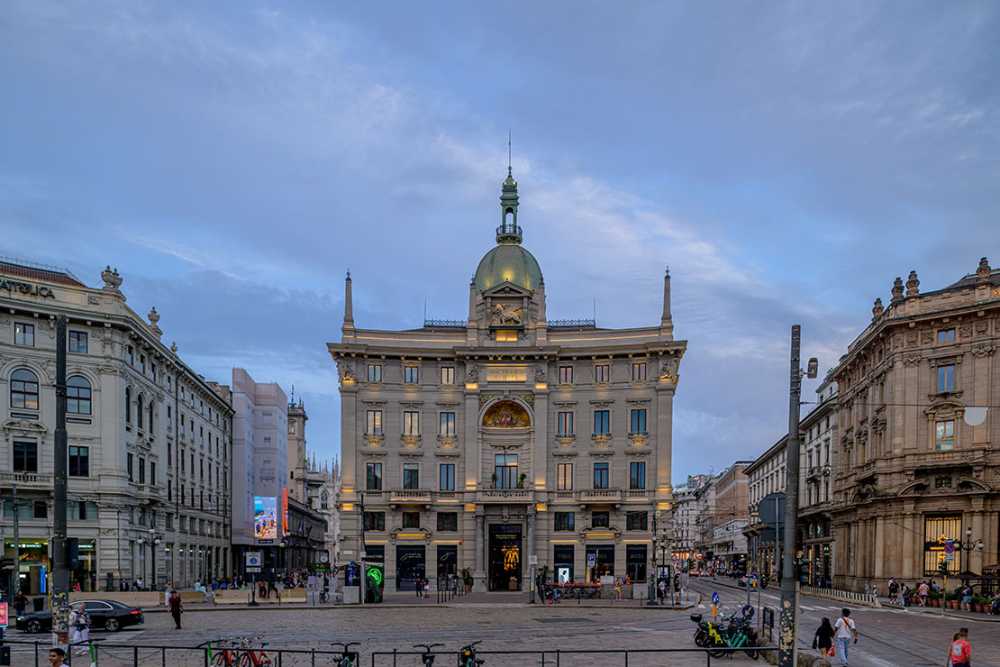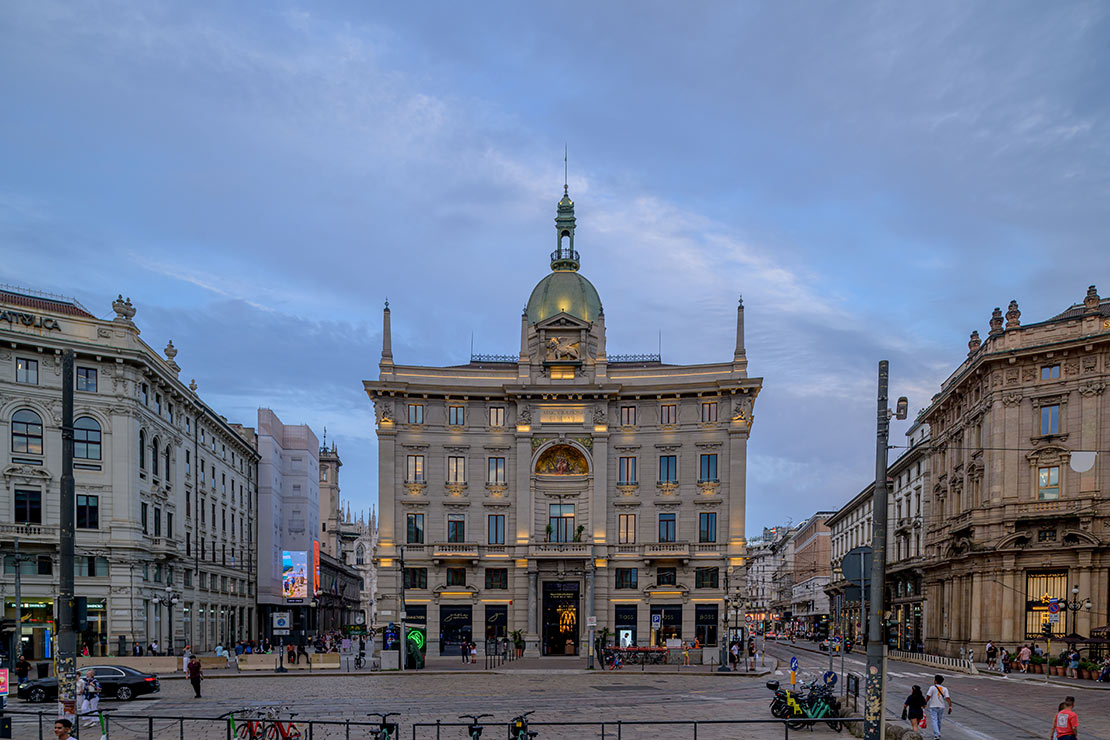Conservative restoration: respect and innovation
The facade: a restored masterpiece
The restoration of the facade has been carried out with the utmost attention to historical details, as required by such architectural projects, preserving the original elements through a highly precise conservative intervention. All the windows have been replaced with high-performance wooden fixtures, faithfully reproduced according to the original 1900s design. This has allowed to maintain the historical aesthetics of the building, while improving its energy performance.
The entrance and the inner courtyard
The main entrance of the Gran Melià Palazzo Cordusio has been preserved through the conservation of the historic door, enhanced by a second glass door that acts as a filter between the outside and the new lobby. This space welcomes guests in an environment that retains the charm of the past but introduces modern elements. The inner courtyard, once a horse storage area, has been transformed into an elegant multifunctional space, covered by a steel and glass structure that harmoniously blends with the building's geometry.
Panoramic terraces: a view of history
The terraces on the fifth floor, overlooking the majestic Piazza Mercanti and the Duomo, represent one of the most striking points of the project. The flooring has been selected with the approval of the Superintendence, using finishes that recall traditional Milanese wooden terraces. The parapets have been restored, reinforced, and integrated with glass elements to ensure safety without compromising the panoramic view. Another terrace, on the fourth floor, has been created above what used to be an attic, offering a new convivial area to host the hotel's F&B spaces.























